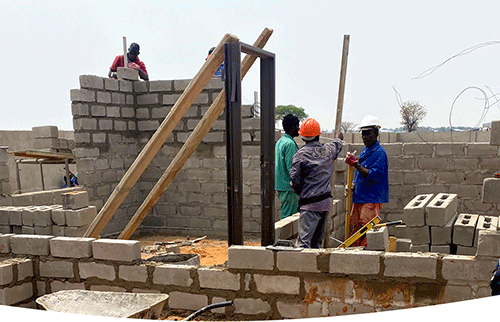The real value of building plans approved declined by 7.8% and 9.1% year-on-year and quarter-on-quarter, respectively, to N$502.4 million during the first quarter of 2022.
Building plans approved is a leading indicator for future construction activities. They are described as an excellent economic barometer, as it creates direct jobs as well as income and tax revenue for the State, and significantly contributes to strong economic performance.
The Bank of Namibia (BoN) quarterly bulletin for June 2022 stated the decrease was partly reflected in the fall in the real value of new buildings approved across residential areas in Windhoek, Swakopmund and Ongwediva and commercial properties in Walvis Bay, Swakopmund and Ongwediva.
Likewise, the real value of buildings completed decreased by 7.1% year-on-year and 10.6% quarter-on-quarter to N$252.3 million.
According to the BoN, the decline was partly due to weak activities in the construction sector during the period under review, when compared to the same period of the previous year. It was, in part, reflected in the subdued property developments in Windhoek, Walvis Bay and Ongwediva during the quarter under review.
Similarly, activities in the construction sector declined, year-on-year, during the first quarter of 2022, driven by slower construction works in the government and private sector.
The bank noted government’s spending on public construction work programmes fell, in real terms, by 40.2% and 27%, year-on-year and quarter-on-quarter, respectively, to N$368.6 million during the quarter under review.
“The decline partly reflects the corresponding subdued budgetary provisions for construction projects in the 2021/22 fiscal year. This was partly due to low government expenditure on construction and related activities, in line with fiscal reprioritisation towards the mitigation of the impact of Covid-19 pandemic and to other priority areas,” reads the bulletin.
Furthermore, in overall terms, activities in the domestic economy improved significantly during the first quarter of 2022, supported by several key sectors in the primary and tertiary industries.
The domestic economy grew by 5.3% during the first quarter of 2022 from the contraction of 4.9% during the same period last year. The improvement in Namibia’s primary industry was registered in the mining sector, where the production of most key minerals such as diamonds, gold and zinc concentrate increased while an increase in marketing activities for cattle and small stock supported the growth in the agricultural sector.
Moreover, improvements were also observed in the tertiary industry, particularly in sectors such as wholesale and retail trade, tourism, communication and transport.
On the fiscal front, the central bank stated central government’s debt stock rose over the year to the end of March 2022, while government loan guarantees declined.
“As a result, government’s total debt as a percentage of gross domestic product (GDP) stood at 68% at the end of March 2022, representing yearly and quarterly increases of 10.1 percentage points and 1.6 percentage points, respectively,” it said.
The increases on a yearly basis were driven by a rise in the issuance of both Treasury Bills (TBs) and Internal Registered Stock (IRS). External debt, however, declined year-on-year, owing to the redemption of one of the Eurobonds in November 2021.
The bank added: “Total central government loan guarantees declined on a yearly basis, mainly due to repayments of foreign loans which were guaranteed by government in sectors such as transport and energy coupled with the repayment of domestic loans to the finance, transportation and energy sectors.”


